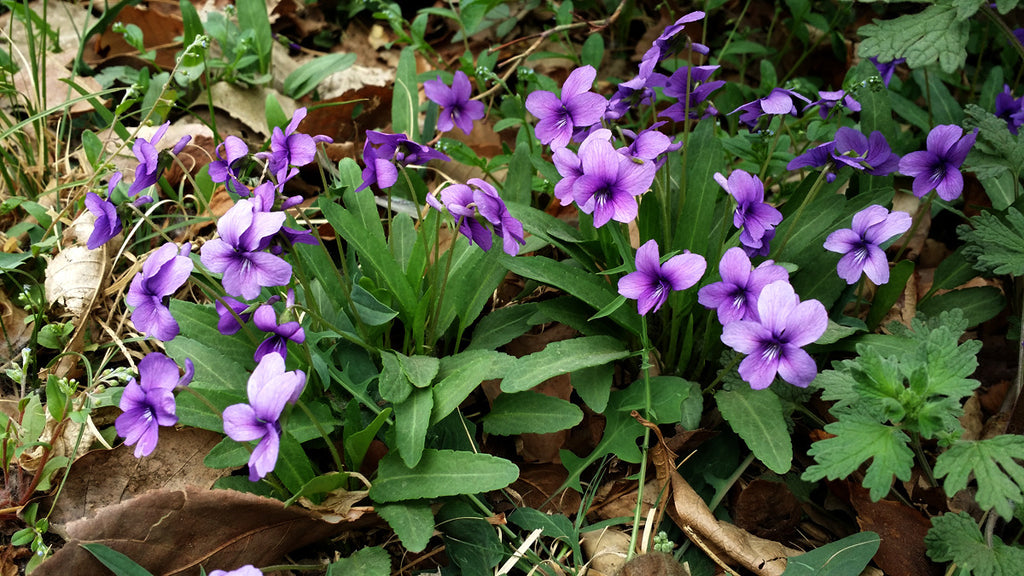7 HEALING FLOWERS USED IN TRADITIONAL CHINESE MEDICINE
TALK FLOWERS TO ME.
Nearly everyone loves flowers for how beautiful they are to look at, especially women. But did you know they are also great for healing purposes? You've probably heard of some of the more common super herbs and adaptogens used in Traditional Chinese Medicine (TCM), such as ginseng, goji berries, and reishi mushroom. Here, we share with you 7 flowers that have been used as part of Chinese medicine for healing and more for centuries.

1. Lonicera Flower (Jin Yin Hua 金银花)
Also known as honeysuckle flower, this is often used for colds, flu, and sore throats. It was even used in combination with three other herbs as a treatment for swine flu. Research has shown the flower, in combination with other herbs used to treat acute bronchitis, "had potent pharmacological action" as well as showed antiviral and antibacterial effects. It's also known for its anti-inflammatory actions. (1) (2) 
2. Viola Flower (Zi Hua Di Ding 紫花地丁)
Also known as the purple flower earth herb or the Chinese violet, viola flower has anti-inflammatory and antipyretic (fever-reducing) effects. It is often used for clearing heat, releasing toxins, or dissolving masses, and it is an age-old remedy for snake bites (to help reduce both swelling and toxicity).
Viola is traditionally associated with the heart and the liver and is also sometimes used for bacterial infections.
3. Pagoda Flower (Huai Hua 槐花)
Also known as Sophorae flower, this remedy is used for bleeding disorders, including in the treatment of hemorrhoids and excessive menstrual bleeding.
GET $5 OFF TODAY USING CODE “5OFF”
4. Chrysanthemum Flower (Ju Hua 菊花)
This adaptogenic herb is useful for treating dry, irritated eyes, high blood pressure, and headaches. Chrysanthemum flowers are often used in combination with honeysuckle to lower high blood pressure and treat arteriosclerosis. (3)
It's also said to affect the liver and lungs and is commonly consumed in tea form.
"The benefits of long-term consumption of Chrysanthemum tea have been recognized throughout the history of Chinese medicine. It is said to prevent aging and to be a favorite of Taoists and poets, though the benefits are achieved only with drinking the tea over a long period of time.
In the Shen Nong Ben Cao Jing, it says, 'taken over a long time it facilitates the qi and blood, lightens the body and prevents aging.'"

5. Safflower (Hong Hua 红花)
Also known as Carthamus, this red flower is typically used to treat menstrual disorders, invigorate circulation, and dissolve clots. It's also useful for treating heart disease, joint pain, and flat warts. (4)
Safflower was among a group of Chinese herbs found to be potentially beneficial for people with elevated blood triglyceride levels, a risk factor for arteriosclerosis, diabetes, and high blood pressure. (5)
According to the American Botanical Council (ABC), safflower is among the blood-promoting herbs in Chinese medicine that aid circulation, nourish blood and increase its production, and have anti-thrombotic properties. ABC notes safflower may "support coronary blood flow and reduce myocardial oxygen use, ischemia, and arrhythmia."

6. Magnolia Flower (Xin Yin Hua 辛夷花)
If you have nasal congestion or chronic sinusitis, magnolia flower is the herbal remedy for you. An herbal tea containing magnolia flower and other Chinese herbs was found to improve chronic sinusitis when used for six weeks.
Fermented magnolia flower petal extract has also shown promise as a natural antioxidant and anti-cancer agent.
USE CODE “5OFF” TODAY FOR $5 OFF!
7. Lotus Flower (Lian Hua 莲花)
The lotus flower is used for treating bleeding disorders, including bloody noses, as well as irritability and fevers. Its seeds, stem, and leaves are also used in TCM for other holistic healing purposes.
1 comment
How do I eat or drink these flowers






















